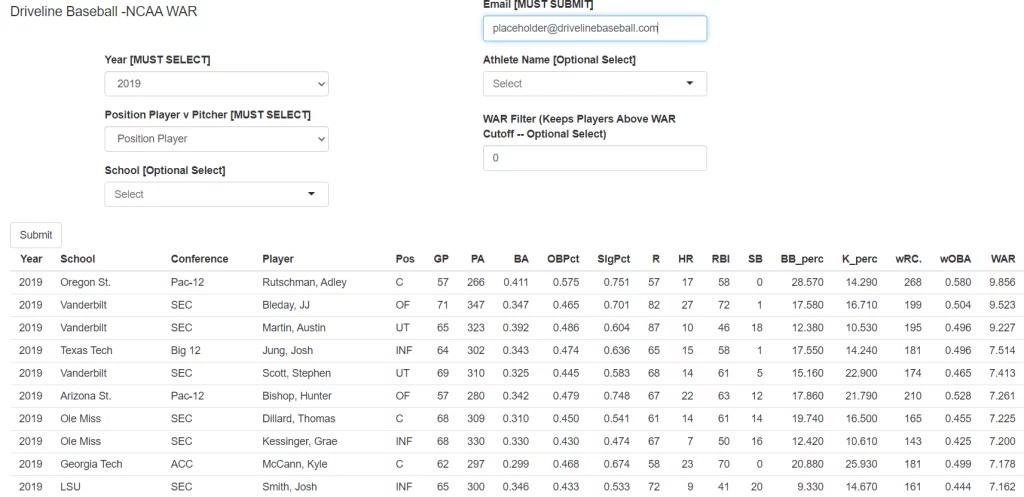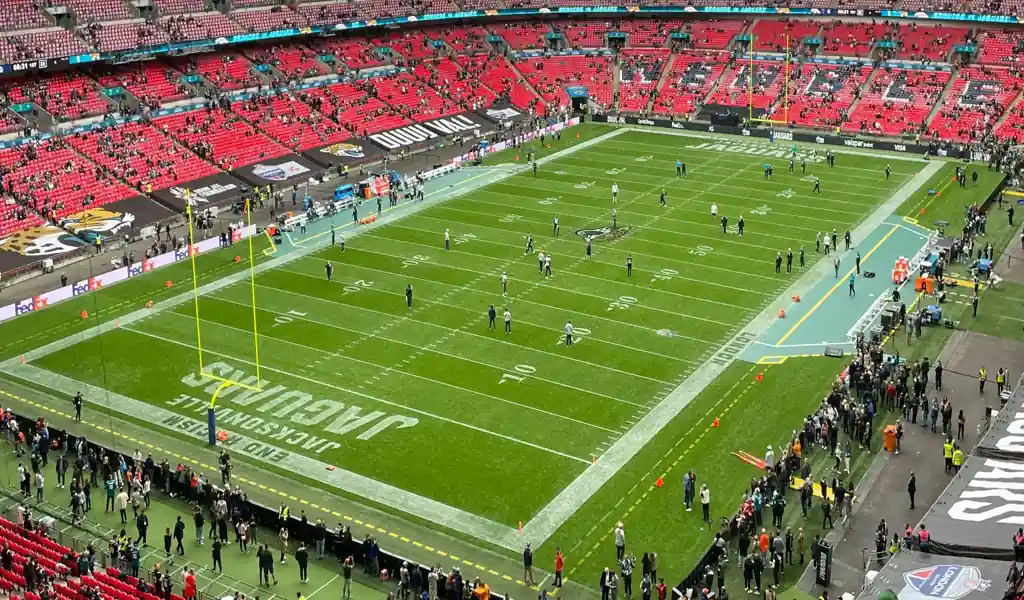Baseball fans have long craved a single number to capture a player’s true worth. Enter WAR (Wins Above Replacement), a revolutionary statistic that goes beyond batting averages and home runs. WAR attempts to assess a player’s total contribution to winning games, considering not just their offensive power but also their defensive prowess, baserunning skills, and even their position on the field.
This article delves into the world of WAR, explaining how it works and why it’s become a cornerstone of modern baseball analysis. We’ll explore how WAR factors in everything from a center fielder’s diving catch (defensive runs saved) to a pitcher’s ability to limit walks and rely on strikeouts ( Fielding Independent Pitching).
But WAR isn’t without its complexities. We’ll explore the slight differences between popular WAR calculations, like Baseball Reference’s and FanGraphs’. We’ll also address the ongoing debate about how to quantify a player’s impact beyond basic statistics – their clutch performance in double-play situations or their leadership on the field.
By understanding WAR’s strengths and limitations, you’ll be equipped to compare players across eras and positions on the same scale. So, whether you’re a die-hard fan debating the merits of an MVP candidate or a casual observer curious about a player’s value, understanding WAR will unlock a deeper appreciation for the multifaceted world of baseball.
Who is a Replacement Player in Wins Above Replacement (WAR) in Baseball?
In the context of Wins Above Replacement (WAR), a replacement player is a hypothetical concept, not an actual player on a team’s roster. It represents a minimally skilled player who could be readily brought in to fill a spot on the team at a minimal cost. Here’s a breakdown of how replacement level functions in WAR.
- Baseline Performance: Imagine a player with just enough talent to hang on to a roster spot in Major League Baseball (MLB). They might not be a star, but they possess basic skills to contribute defensively and offensively at a very low level.
- Minimal Cost: This player wouldn’t command a high salary, likely close to the league minimum. Teams could potentially find such players in the minor leagues or free agency.
- Benchmark for WAR: By comparing a player’s actual performance to this hypothetical replacement, WAR estimates the number of additional wins they contribute to their team.
Examples of Replacement Level Performance
- A hitter who barely maintains a batting average above the league average and has very little power.
- A fielder who makes all the routine plays at their position but struggles with anything challenging.
- A pitcher with an Earned Run Average (ERA) slightly above the league average.
Remember, a replacement level is a conceptual idea, not a specific player. Its value can fluctuate slightly depending on the overall talent level across the league in a given year. A replacement-level player wouldn’t necessarily be a starter. They might be a backup outfielder or a fringe bullpen arm.
Understanding replacement levels is crucial for interpreting WAR. It provides a benchmark to assess how much more valuable a player is compared to someone who could simply fill a roster spot without significantly impacting the team’s win total.

What is WAR in Baseball?
WAR, which stands for Wins Above Replacement, is a complex but important statistic used in baseball to assess a player’s overall value to their team. It goes beyond traditional stats like batting average or home runs, aiming to capture a player’s contributions in all aspects of the game: hitting, baserunning, and fielding.
The core concept of WAR is to compare a player to a “replacement-level” player. This hypothetical player is someone with minimal skills who could be readily brought in to fill a roster spot. By estimating how many more wins a team would achieve with a particular player compared to this replacement, we get a sense of their true impact.
Calculating WAR is no easy feat. It involves a bunch of advanced metrics that attempt to quantify a player’s offensive and defensive contributions in terms of runs. For offense, factors like batting average, on-base percentage, and slugging percentage are considered. On the defensive side, metrics that estimate the number of runs a fielder saves or allows compared to an average player are factored in.
There are different ways to calculate WAR, with two of the most prominent being Baseball-Reference’s (bWAR) and FanGraphs’ (fWAR). While the overall idea is the same, there can be slight variations in the methods used, leading to slightly different WAR values for the same player.
Despite its complexities, WAR has become a valuable tool for baseball analysts, fans, and even front offices to evaluate players. By providing a more comprehensive picture of a player’s worth, WAR helps us move beyond traditional batting averages and appreciate the well-rounded contributions of truly impactful players.
What are the Factors Shaping a Player’s Wins Above Replacement (WAR)?
Wins Above Replacement (WAR) has become the gold standard for evaluating a baseball player’s overall value. It transcends basic statistics like batting average and home runs, offering a holistic view of a player’s impact on winning games. However, this seemingly simple metric is influenced by a multitude of factors, making it a fascinating concept to delve into. Let’s dissect the key elements that shape a player’s WAR.
Hitting Prowess: The Engine that Drives Runs
The offense is a cornerstone of WAR, and a player’s hitting ability significantly impacts their value. Here’s a breakdown of the crucial factors:
- Batting Average & On-Base Percentage (OBP): These metrics quantify a player’s ability to make consistent contact and reach base, directly translating into runs scored. A high batting average and OBP indicate a player generates offensive opportunities for themselves and their teammates.
- Slugging Percentage (SLG): It measures a player’s extra-base hit power, translating to runs driven in (RBI) and scored. A high slugging percentage signifies a player’s ability to hit for power and create multiple runs with a single swing.
- Walks & Strikeouts: While drawing walks increases OBP, strikeouts represent a wasted opportunity. A player who balances walks and strikeouts effectively maximizes their offensive value.
Beyond traditional stats, advanced metrics like Weighted On-Base Average (wOBA) are incorporated, accounting for the context of a player’s hits (e.g., singles vs. home runs) and park factors (e.g., hitter-friendly ballparks).
Defensive Wizardry: Runs Saved on the Field
Defense plays a crucial role in preventing runs, and WAR factors in a player’s defensive contributions. Here’s how:
- Fielding Percentage (FLD%): While a basic stat, FLD% indicates a player’s ability to convert balls in play into outs. However, advanced metrics like Defensive Runs Saved (DRS) provide a more nuanced picture, considering a player’s positioning and range.
- Positional Difficulty: Different positions have varying defensive demands. For example, shortstops and center fielders are expected to make more challenging plays compared to first basemen. WAR accounts for this by adjusting a player’s defensive value based on their position.
Modern metrics are constantly evolving to better capture a player’s defensive impact. Statcast™ data, for instance, uses exit velocity and launch angle of batted balls to estimate a fielder’s chance of making a catch.
Baserunning Brilliance: Stealing Wins One Bag at a Time
While often overlooked, baserunning plays a significant role in scoring runs and creating scoring opportunities. Here’s what WAR considers:
- Stolen Bases: A successful stolen base can put a runner in a scoring position or disrupt a pitcher’s rhythm. However, getting caught stealing can be detrimental. WAR factors in both successful steals and caught stealings to evaluate a player’s baserunning efficiency.
- Baserunning Awareness: Metrics like baserunning runs (BRR) estimate the additional runs a player creates or prevents through intelligent baserunning decisions, like taking the extra base or avoiding a costly out on the basepaths.
Understanding these factors empowers fans and analysts to appreciate the multifaceted nature of WAR. A player might not hit for a high average, but their defensive prowess and baserunning savvy could still make them a valuable asset, reflected in a strong WAR value.

How Do You Calculate WAR in Baseball?
While the core concept of Wins Above Replacement (WAR) is consistent – comparing a player to a replacement-level player – there are several ways to calculate it. Let’s explore some of them.
Baseball-Reference (bWAR)
While Baseball-Reference (bWAR) doesn’t provide a publicly available, step-by-step calculation for their WAR metric, we can break down the process based on the components they use. bWAR dissects a player’s value into six main components, each focusing on a different aspect of the game:
- Batting Runs (BR): This estimates the number of runs a player contributes offensively compared to the league average. It factors in metrics like batting average, on-base percentage, slugging percentage, and park factors (offensive environments of different ballparks).
- Baserunning Runs (Rbaserunning): This captures the impact of a player’s baserunning decisions on run scoring. It considers stolen bases, caught stealings, taking the extra base, and avoiding outs on the basepaths. Metrics like baserunning runs (BRR) are likely used in this calculation.
- Fielding Runs (RF): This measures a player’s defensive contribution by estimating the number of runs they save compared to an average player at the same position. Advanced metrics like Defensive Runs Saved (DRS) likely play a role here.
- Positional Adjustment (Pos Adj): This accounts for the inherent defensive difficulty of different positions. For example, a shortstop is expected to make more challenging plays than a first baseman. bWAR assigns a multiplier to each position based on its defensive demands, adjusting the player’s defensive value accordingly.
- League Adjustment (LgA): This normalizes offensive value across leagues with different offensive environments. Since some leagues might be more pitcher-friendly or hitter-friendly, this adjustment ensures a fairer comparison between players in different leagues.
- Replacement Runs (Rrep): This estimates the number of runs a replacement-level player (someone with minimal skills) would contribute to the player’s playing time. By subtracting this value from the sum of the other components, we get a player’s value relative to a replacement.
While the exact formula used by bWAR isn’t publicly available, we can imagine it looking something like this (keeping the notation simple):
bWAR = BR + Rbaserunning + RF + Pos Adj + LgA – Rrep
Important Considerations
- Each component likely involves complex calculations and adjustments based on league averages, park factors, and positional norms.
- bWAR constantly evolves as sabermetricians develop new metrics and refine their models.
- The specific details of these calculations remain proprietary to Baseball Reference.
By understanding the components and the logic behind bWAR, you can gain a deeper appreciation of how this valuable statistic assesses a player’s overall contribution to their team.
FanGraphs (fWAR)
Calculating fWAR is a complex process that involves multiple components and advanced sabermetric concepts. While a full explanation dives deep into statistical formulas, here’s a breakdown of the core elements and the logic behind them.
1. Building Blocks: Offensive and Defensive Runs
- Offensive Runs: This estimates a player’s offensive value compared to the league average. FanGraphs doesn’t directly provide this but uses metrics like wOBA (Weighted On-Base Average) adjusted for park and league factors (wRC+). Higher wRC+ signifies a player generates more runs than average.
- Defensive Runs: Here, fWAR uses Wins Above Average (WAA) to quantify a player’s defensive contribution. WAA considers factors like:
- Range Factor: Measures a player’s ability to cover ground and get to batted balls.
- Zone Rating: Evaluate a fielder’s positioning and efficiency in converting balls in play to outs in specific zones of the field.
- Double Plays: Credits a fielder for their role in turning double plays.
2. Additional Considerations
- Baserunning Runs: This component factors in the impact of baserunning decisions (steals, outs made on the basepaths) on a player’s run contribution.
- Positional Adjustment: Different positions have varying defensive demands. Shortstops are expected to make more challenging plays compared to first basemen. fWAR considers this by adjusting a player’s defensive value based on their position.
- League Adjustment: Offensive environments can differ between leagues. fWAR normalizes offensive value across leagues to provide a more balanced comparison.
- Replacement Runs: This component estimates the runs a replacement-level player would contribute to the player’s playing time. By subtracting replacement runs from a player’s total runs (offensive + defensive + baserunning), we isolate their value compared to a baseline.
3. Putting it All Together: The fWAR Formula (Simplified View)
While the specific formula is constantly evolving, a simplified representation looks something like this:
fWAR = (Batting Runs + Baserunning Runs + Fielding Runs + Positional Adjustment + League Adjustment – Replacement Runs) / Runs Per Win
Important Note: This is a simplified view to illustrate the core concepts. The actual calculation involves weights assigned to different metrics and adjustments based on league context and game situations.

How to Interpret Wins Above Replacement (WAR) in Baseball?
WAR attempts to measure a player’s total value on the field compared to a replacement-level player – essentially, a player readily available to fill the position for minimal cost. A WAR of:
- Above 0: Indicates the player is above average and contributes more wins than a replacement.
- Exactly 0: Represents an average player who contributes the same number of wins as a replacement.
- Below 0: Suggests the player is below average and their performance costs the team wins compared to a replacement.
Interpreting the Value
There’s no single definitive interpretation of a specific WAR value. However, some general guidelines can help:
- Elite Players: Players with WAR consistently above 6.0 are considered elite performers who significantly contribute to their team’s success.
- All-Star Caliber: A WAR between 4.0 and 6.0 typically signifies an All-Star caliber player with a substantial positive impact.
- Solid Contributors: Players with a WAR of 2.0 to 4.0 are valuable contributors above average.
- Replacement Level: A WAR around 0 suggests the player performs similarly to a readily available replacement.
- Below Replacement: Negative WAR indicates the player’s performance is costing the team wins compared to a replacement.
Important Considerations
- Context is Key: Consider the player’s position. A catcher with a WAR of 2.0 might be very valuable, while a shortstop with the same WAR might be considered less impactful.
- League Averages: WAR is often compared to league averages for a better understanding of a player’s value relative to their peers.
- Not the Only Stat: WAR is a valuable tool, but it shouldn’t be the sole factor for player evaluation. Consider scouting reports, injury history, and performance against specific teams for a more complete picture.
WAR provides a comprehensive way to evaluate a player’s overall contribution to winning games. By understanding its components and interpreting them with context, WAR can be a valuable tool for appreciating the multifaceted world of baseball.
bWAR vs fWAR: Unveiling the Differences in Baseball’s WAR Landscape
Wins Above Replacement (WAR) has become the gold standard for evaluating a player’s overall value in baseball. But within the realm of WAR, two prominent methods reign supreme: Baseball-Reference’s (bWAR) and FanGraphs’ (fWAR). While the core concept remains the same – comparing a player to a replacement-level player – there are subtle variations in their approaches. Let’s delve into the key differences between bWAR and fWAR.
The Components of WAR
Both bWAR and fWAR consider similar components to estimate a player’s value:
- Offensive Runs: This estimates a player’s offensive contribution compared to the league average.
- Defensive Runs: This quantifies a player’s defensive impact compared to an average player at their position.
- Baserunning Runs: This factors in the impact of baserunning decisions on a player’s run contribution.
- Replacement Runs: This estimates the runs a replacement-level player would contribute.
However, the way they calculate each component can differ:
Defense
- bWAR: Uses Defensive Runs Saved (DRS) which considers a fielder’s positioning and range in converting batted balls to outs for specific zones of the field.
- fWAR: Employs Wins Above Average (WAA) which factors in range factor, zone rating, and double plays.
Baserunning
- bWAR: Utilizes a model that considers stolen bases, caught stealing, and baserunning outs.
- fWAR: Employs a different baserunning model with potentially varying weightings for different baserunning events.
League Adjustments
Both bWAR and fWAR account for offensive environment differences between leagues, but the specific methods might differ slightly.
These variations can lead to slight discrepancies in WAR values for the same player. Generally, the differences are not significant, but they can be noticeable in certain cases, particularly for players with strong defensive impacts or baserunning skills.
Choosing the Right WAR: Does it Matter?
While both bWAR and fWAR are valuable tools, there’s no definitive answer to which one is “better.” Here’s a breakdown of factors to consider:
- Familiarity: If you’re accustomed to using one method (e.g., bWAR on Baseball-Reference), there’s no need to switch unless you’re specifically interested in fWAR’s approach.
- Understanding the Nuances: If you delve deeper, understanding the specific calculations behind each component in bWAR and fWAR can help you interpret the slight discrepancies you might encounter.
- Focus of Analysis: For a well-rounded picture, consider looking at both bWAR and fWAR to see if there are any significant differences. This can spark further investigation into a player’s defensive metrics or baserunning performance.
Ultimately, both bWAR and fWAR provide valuable insights into a player’s performance. Recognizing the slight differences in their methodologies and using them in conjunction with scouting reports and other forms of analysis allows for a more comprehensive understanding of a player’s true worth on the field.
Why Wins Above Replacement (WAR) is Important in Baseball?
The current lockout in Major League Baseball (MLB) has shone a light on several issues, including the use of advanced statistics like Wins Above Replacement (WAR). While some express concerns about its limitations, WAR remains a valuable tool for evaluating players and enhancing our understanding of the game. Let’s delve into the undeniable advantages WAR brings to baseball.
Beyond Batting Average: A Holistic View of Player Value
Traditionally, baseball analysis relied heavily on basic statistics like batting average and home runs. While these offer a glimpse into a player’s offensive prowess, they don’t capture the full picture. WAR goes beyond the batter’s box, factoring in a player’s defensive contributions, baserunning skills, and even their position on the field. This comprehensive approach provides a more accurate representation of a player’s overall impact on winning games.
Imagine a player with a high batting average but shaky fielding. Their traditional stats might be impressive, but defensively they might be a liability. WAR considers this, revealing their true value to the team. Conversely, a player with a lower batting average who excels defensively and on the basepaths could have a higher WAR, highlighting their well-rounded skillset.
Leveling the Playing Field: Accounting for Park Effects
Baseball stadiums have varying characteristics – some are known as “hitter-friendly” parks, while others favor pitchers. Traditional statistics wouldn’t account for these differences. A player hitting well in a hitter-friendly park might appear more valuable than someone performing consistently in a pitcher’s park. WAR incorporates park adjustments, normalizing offensive production across different stadiums and providing a fairer evaluation of a player’s hitting ability.
Unveiling Hidden Gems: Identifying Under-the-Radar Talent
WAR’s ability to look beyond traditional stats can be a game-changer for scouting and player development. A player with a low batting average but exceptional on-base skills or a stellar defensive presence might be overlooked based on traditional metrics. WAR helps identify these “hidden gems,” allowing teams to focus on players who may not have flashy statistics but contribute significantly to winning.
Fostering a More Strategic Game: Utilizing WAR for Informed Decisions
Modern baseball is a data-driven sport. WAR empowers teams to make informed decisions regarding player acquisition, lineup construction, and even in-game strategy. By understanding a player’s WAR value, teams can optimize their rosters and tactics, maximizing their chances of success.
For example, WAR can help determine the ideal batting order. A player with a high on-base percentage might be better suited to bat leadoff, setting the table for teammates with higher slugging percentages. Similarly, knowing a pitcher’s WAR can influence decisions on when to pull them from the game or how aggressively to play defense behind them.
Limitation of Wins Above Replacement (WAR) in Baseball
Wins Above Replacement (WAR) has revolutionized how we analyze baseball players, offering a more comprehensive picture of their worth than traditional batting averages and home run totals. However, like any statistic, WAR has its limitations. Let’s explore some of these shortcomings and potential solutions to ensure WAR remains a valuable tool, not a definitive answer.
The Inconsistency of WAR: Different Calculations, Different Results
There’s no single, universally accepted formula for calculating WAR. Two prominent methods, Baseball-Reference (bWAR) and FanGraphs (fWAR), use slightly different approaches and metrics, leading to discrepancies in WAR values for the same player. This inconsistency can be confusing for fans and analysts alike.
Potential Solution: While a single, unified formula might not be feasible, greater standardization across WAR calculations would enhance its reliability. Collaboration between sabermetric communities could lead to a more consistent framework for calculating WAR, minimizing discrepancies.
The Challenge of Quantifying Defense: Beyond Basic Metrics
WAR attempts to measure defensive contributions, but translating complex defensive plays into a single number remains a challenge. Current methods rely on metrics like fielding percentage (FLD%) and Defensive Runs Saved (DRS), which have limitations. FLD% doesn’t account for a player’s positioning or range, while DRS can be subjective.
Potential Solution: Advanced technologies like Statcast™ are offering new possibilities. By analyzing exit velocity, launch angle, and player positioning data, we can develop more nuanced defensive metrics that better capture a player’s defensive impact.
The Intangibles: Clutch Performances and Leadership
WAR prioritizes objective, quantifiable data. However, some aspects of the game are harder to measure. A player’s ability to perform under pressure in late-inning situations, their leadership qualities, and their impact on team morale are not reflected in WAR.
Potential Solution: While completely quantifying intangibles might be impossible, acknowledging their importance is crucial. Integrating scouting reports, player evaluations, and historical clutch performance data alongside WAR can provide a more complete picture.
Beyond a Single Number: Using WAR as a Starting Point
Perhaps the biggest limitation of WAR is the temptation to use it as the sole metric for player evaluation. WAR is a valuable tool, but it shouldn’t be the only factor considered.
Potential Solution: WAR should be used as a starting point for analysis, prompting further investigation. Scouting reports, player health, and historical performance against specific teams or pitchers all contribute to a player’s overall value.
In conclusion, WAR offers a powerful lens into player performance, but it’s not perfect. Recognizing its limitations and using it alongside other forms of analysis is crucial. By continuously refining WAR calculations, incorporating new technologies, and valuing intangibles, we can ensure WAR remains a valuable tool for understanding and appreciating the multifaceted world of baseball.

What Other Major League Baseball (MLB) Statistics are Useful?
Beyond Wins Above Replacement (WAR), a whole world of statistics exists to analyze and appreciate the intricacies of Major League Baseball (MLB). Here’s a breakdown of some key categories to consider.
Wins Above Average (WAA)
WAA, which stands for Wins Above Average, is a sabermetric statistic used in baseball to estimate a player’s value compared to the average Major League Baseball (MLB) player, rather than a replacement-level player like WAR (Wins Above Replacement). Here’s a breakdown of WAA and how it differs from WAR.
- Focus: WAR compares a player to a replacement-level player, someone readily available to fill the position for minimal cost. WAA, on the other hand, focuses on how a player stacks up against the average MLB player in their position.
- Interpretation: A WAR above 0 indicates a player is above average and contributes more wins than a replacement. WAA, however, doesn’t have a direct wins translation. A positive WAA signifies a player performs better than the average player at their position, while a negative WAA suggests they are below average.
Use Cases
- Evaluating Player Performance: WAA can help identify players who are exceeding expectations within the context of their league and position.
- Team Analysis: By analyzing the WAA of all its players, a team can get a sense of its overall strength relative to the average MLB team.
- Relationship to WAR: While not directly interchangeable, WAR and WAA are related. The sum of all the WAA values for a team’s players will often closely resemble their final win-loss record.
Limitations of WAA
- Doesn’t Account for Replacement Players: Unlike WAR, WAA doesn’t consider the hypothetical value of a replacement player. This can make it less intuitive for some fans to grasp.
- League Dependence: The “average” player can vary depending on the league (American League vs National League). Therefore, WAA needs to be considered within the context of the league a player competes in.
WAA provides a complementary perspective to WAR, offering insights into a player’s performance relative to the average at their position. While WAR focuses on a player’s value compared to a hypothetical replacement, WAA highlights how a player stacks up against their peers within the league. Understanding both WAA and WAR can provide a more comprehensive picture of a player’s contribution to their team.
Batting Average (AVG)
In baseball, Batting Average (AVG), often simply referred to as “average,” is a statistic that measures a batter’s success in making contact with the ball and reaching base safely on a hit. It’s calculated by dividing the number of hits a batter accumulates by their total number of at-bats (AB). Here’s how it works:
Formula: Batting Average (AVG) = Hits / At Bats (AB)
For example, if a batter has 10 hits in 30 at-bats, their batting average would be:
- AVG = 10 hits / 30 AB = 0.333 (usually rounded to three decimal places)
What Does a Good Batting Average Mean?
A high batting average generally indicates a skilled hitter who makes consistent contact with the ball. However, it’s important to consider the context:
- League Average: The average batting average across Major League Baseball (MLB) typically falls somewhere around .250. So, a hitter with an average above .250 is considered to be making good contact consistently.
- Positional Differences: Catchers typically have lower batting averages compared to outfielders or first basemen. This is because catchers often prioritize defense and drawing walks to get on base.
Limitations of Batting Average
While batting average is a simple and widely understood stat, it doesn’t tell the whole story about a hitter’s effectiveness. Here’s why:
- Doesn’t Account for Walks or Extra-Base Hits: A batter who gets walked frequently might have a lower batting average even though they’re reaching base consistently. Similarly, a hitter with a high average might not have much power if they don’t hit many doubles, triples, or home runs.
- Doesn’t Factor in Quality of Contact: A weak ground ball out still counts as an out for batting average, just like a line drive caught by an outfielder.
Using Batting Average in Conjunction with Other Stats
For a more complete picture of a hitter’s performance, it’s crucial to consider other statistics alongside batting average, such as:
- On-Base Percentage (OBP): Measures the percentage of times a batter reaches base safely (including walks and hits).
- Slugging Percentage (SLG): Measures a hitter’s extra-base hitting power.
- Walks (BB): The number of times a batter is walked by the pitcher, automatically advancing to first base.
Earned Run Average (ERA)
By analyzing a combination of these statistics, we gain a better understanding of a hitter’s ability to make contact, get on base, and drive in runs. In baseball, Earned Run Average (ERA) is a key statistic used to measure a pitcher’s effectiveness in preventing runs. It specifically focuses on earned runs, which are runs that score as a direct result of the pitcher’s performance, excluding unearned runs caused by defensive errors.
Here’s how ERA works:
Formula: ERA = (Earned Runs Allowed / Innings Pitched) x 9
Key Points
- Earned Runs Allowed: This refers to the total number of runs a pitcher allows that score due to their pitching, not due to errors by other fielders.
- Innings Pitched: This represents the total number of innings a pitcher has thrown. Since games rarely go a full nine innings, the ERA is adjusted to reflect a full game’s length (nine innings) for better comparison.
- Multiplication by 9: This standardizes the stat across games of varying lengths.
Interpreting ERA
- Lower ERA: A lower ERA indicates a pitcher who consistently limits earned runs, is generally considered more valuable.
- League Average: The average ERA across Major League Baseball (MLB) typically falls somewhere around 4.00. So, a pitcher with an ERA below 4.00 is considered to be performing well in preventing runs.
Important Considerations
- Park Effects: Some stadiums are known to be “hitter-friendly” parks, meaning they favor hitters and lead to more runs scored. A pitcher’s ERA might be slightly higher if they pitch in a hitter-friendly park consistently.
- Focus on Earned Runs: Since ERA excludes unearned runs caused by errors, it provides a more accurate picture of a pitcher’s ability to control the game and prevent runs through their pitching skills.
While ERA is a valuable stat, it doesn’t tell the whole story about a pitcher’s performance. Here are some other pitching statistics to consider for a more comprehensive evaluation:
- WHIP (Walks + Hits per Inning Pitched): Measures control and ability to limit baserunners.
- Strikeouts (K): The number of batters a pitcher strikes out.
- Wins (W) and Losses (L): Not solely dependent on a pitcher’s performance, but can still offer insights into their effectiveness in securing wins.
By analyzing a combination of these statistics, we gain a better understanding of a pitcher’s strengths and weaknesses on the mound.
Defensive Runs Saved (DRS)
Defensive Runs Saved (DRS) is a sabermetric statistic used in Major League Baseball (MLB) to estimate the number of runs a fielder saves compared to an average player at their position. Unlike Fielding Percentage (FLD%), which simply measures the percentage of balls in play that a fielder converts into outs, DRS takes a deeper dive into a player’s defensive impact. Here’s a breakdown of how DRS works
- Concept: DRS assigns a value (positive or negative) to each play a fielder is involved in. Positive values are awarded for plays that are above average for a player’s position (think diving catches or turning a double play). Conversely, negative values are assigned for plays that are below average (like misplays or errors).
- Data Source: DRS relies on data from Baseball Info Solutions (BIS), which meticulously tracks every batted ball in MLB games. BIS factors in factors like launch angle, exit velocity, and fielder positioning to determine the expected outcome of each play.
- Calculation: By accumulating the values assigned to each play a fielder is involved in throughout a season, we arrive at their total DRS. A positive DRS indicates the player saved runs compared to an average fielder, while a negative DRS suggests they cost their team runs defensively.
Benefits of DRS
- Goes Beyond Fielding Percentage: Unlike FLD%, DRS considers the difficulty of each play, providing a more nuanced picture of a fielder’s defensive ability. A player with a high FLD% might not be as valuable defensively if they primarily handle easy plays.
- Accounts for Positional Differences: DRS considers the varying defensive demands of different positions. A difficult play for a first baseman might be routine for a shortstop, and DRS reflects this.
Limitations of DRS
- Subjectivity in Play Classification: While BIS uses advanced data, there can be some subjectivity in how plays are classified (e.g., errors vs. base hits).
- Doesn’t Account for All-Defensive Factors: DRS doesn’t capture everything a fielder does on defense. It doesn’t consider factors like a player’s arm strength or ability to communicate with teammates.
DRS is a valuable tool for evaluating a player’s defensive contributions, but it shouldn’t be used in isolation. When combined with other defensive metrics like fielding range zone rating, and scouting reports, it provides a more comprehensive picture of a player’s defensive abilities.
Conclusion
WAR has undoubtedly revolutionized how we analyze baseball players. By moving beyond basic statistics, it provides a more holistic view of a player’s impact on winning games. However, it’s crucial to remember that WAR is a tool, not a crystal ball. Different calculation methods can lead to slight discrepancies, and the challenge of quantifying a player’s “intangibles” – their clutch performances or leadership qualities – remains.
The true value of WAR lies in its ability to spark deeper analysis. By understanding its components and limitations, we can use WAR alongside scouting reports, historical data, and even advanced metrics like Statcast™ to gain a richer understanding of a player’s true worth.
Ultimately, WAR empowers fans to appreciate the complexities of the game and engage in informed discussions about player performance. So, the next time you hear about WAR, remember it’s not a definitive ranking, but a powerful tool for unlocking the stories behind the numbers and appreciating the artistry of baseball.
FAQs
How does WAR work in baseball?
WAR (Wins Above Replacement) tries to measure a player’s total value compared to a replacement-level player (think a minor leaguer) across a season. It considers a player’s offense (batting runs), defense (defensive runs saved like Ultimate Zone Rating), baserunning (stolen base runs saved), and pitching ( Fielding Independent Pitching for pitchers) to estimate how many additional wins they bring to their team.
What is a good WAR in baseball?
There’s no single “good” WAR, but it depends on the player’s position. Generally, for position players (like outfielders or first basemen), a WAR above 6 is elite, 4-6 is All-Star caliber, and 2-4 is a solid contributor. Pitchers are evaluated similarly on a WAR scale.
How do you calculate WAR in baseball?
There’s no single formula, but different calculations exist (e.g., Baseball Reference vs. FanGraphs). Both consider similar components (offensive runs, defensive stats, baserunning), but might use slightly different methods (like Ultimate Zone Rating vs. DRS) to arrive at a WAR rating.
Who has the highest WAR in baseball?
This can change year-to-year, but all-time leaders tend to be hitters with long careers who consistently put up high WAR due to their offensive and defensive contributions (think Barry Bonds or Mike Trout).













